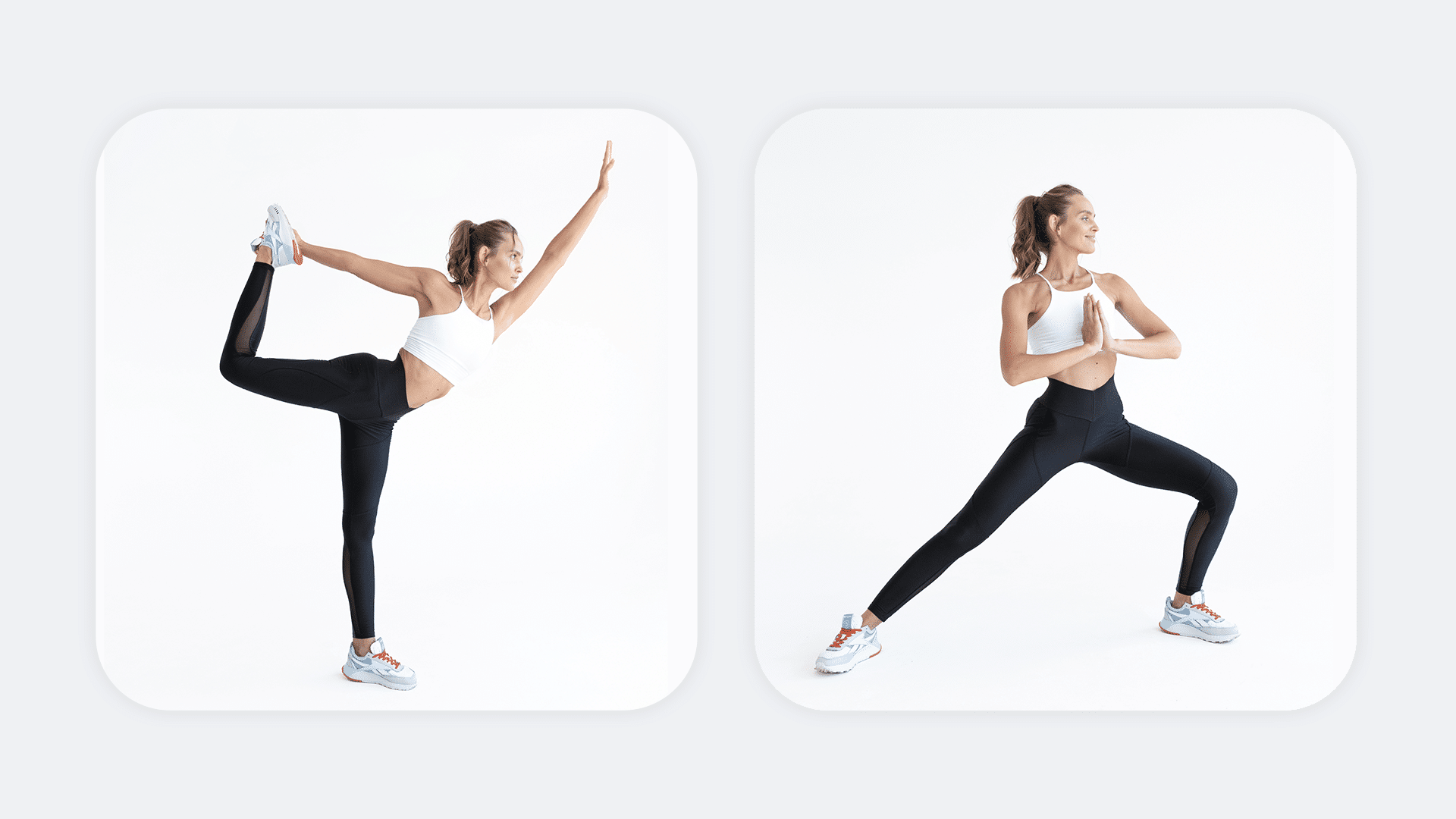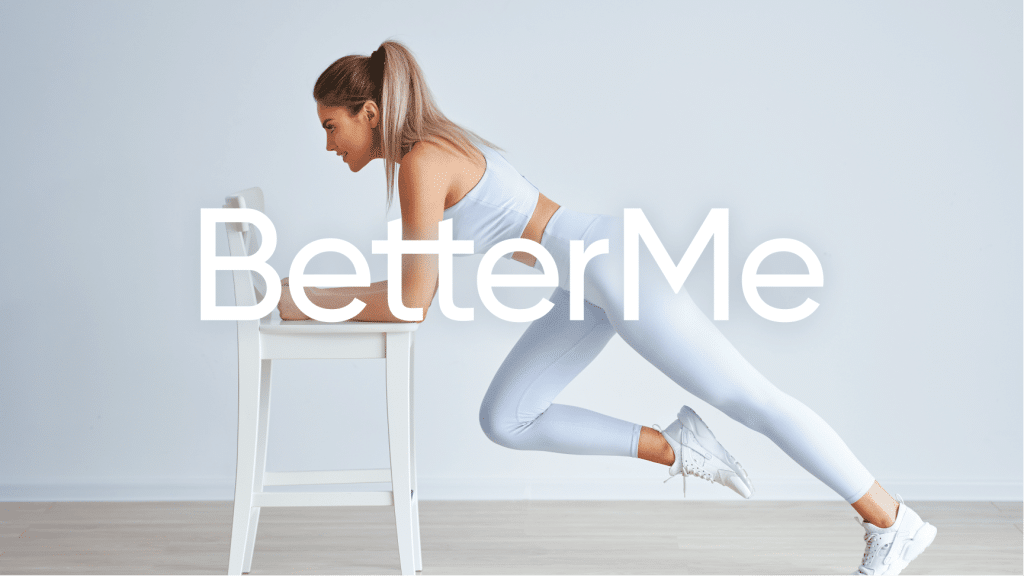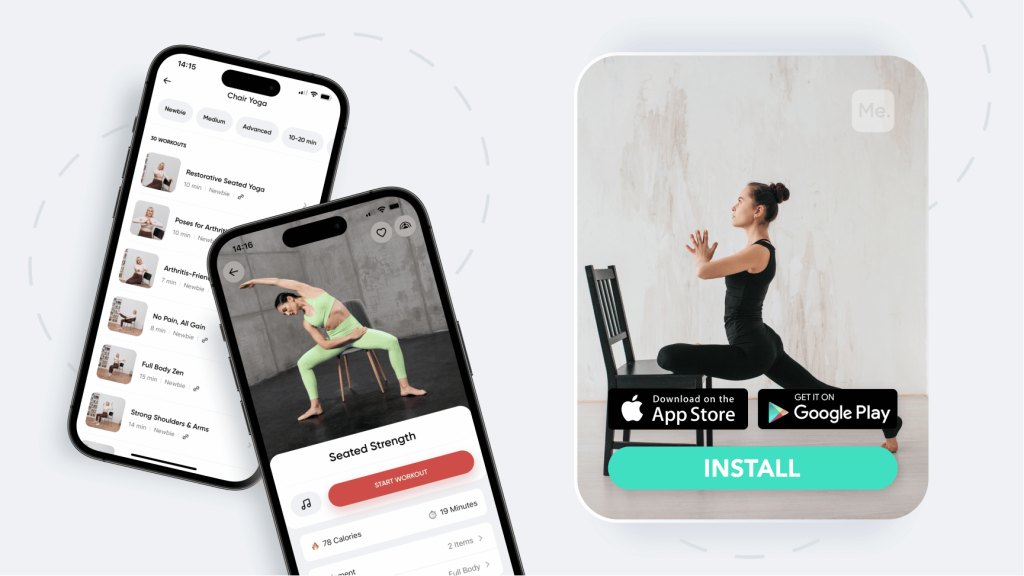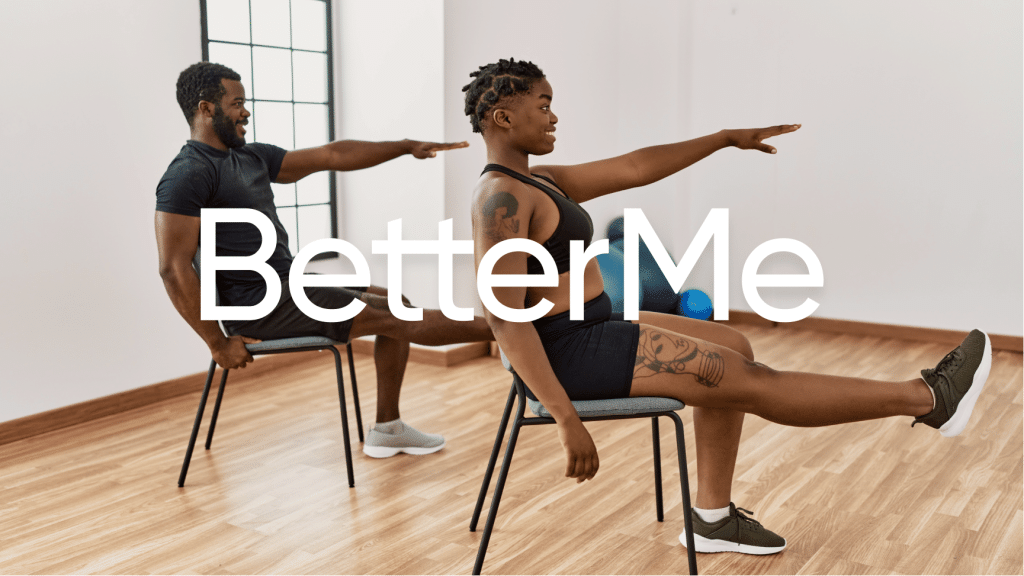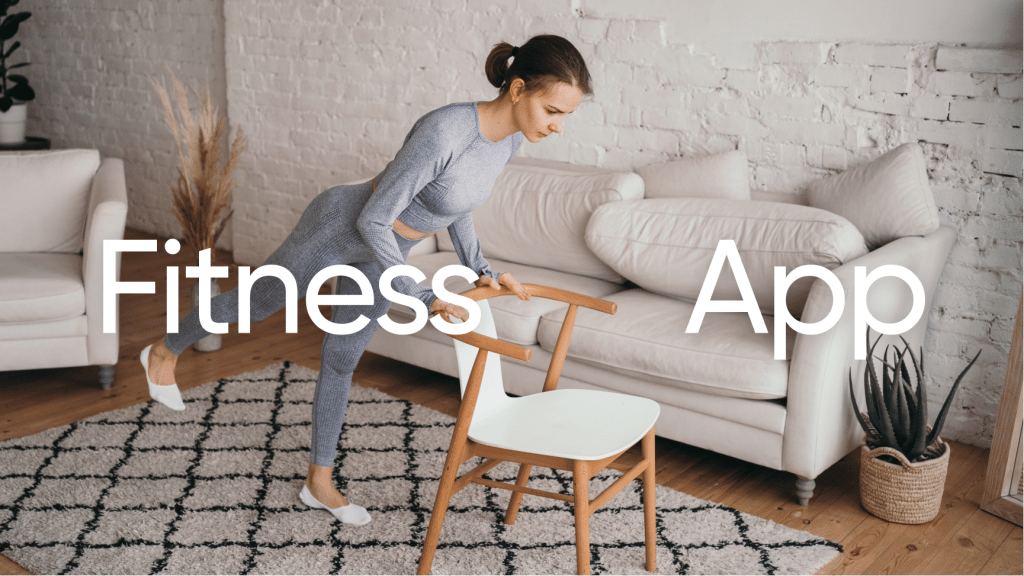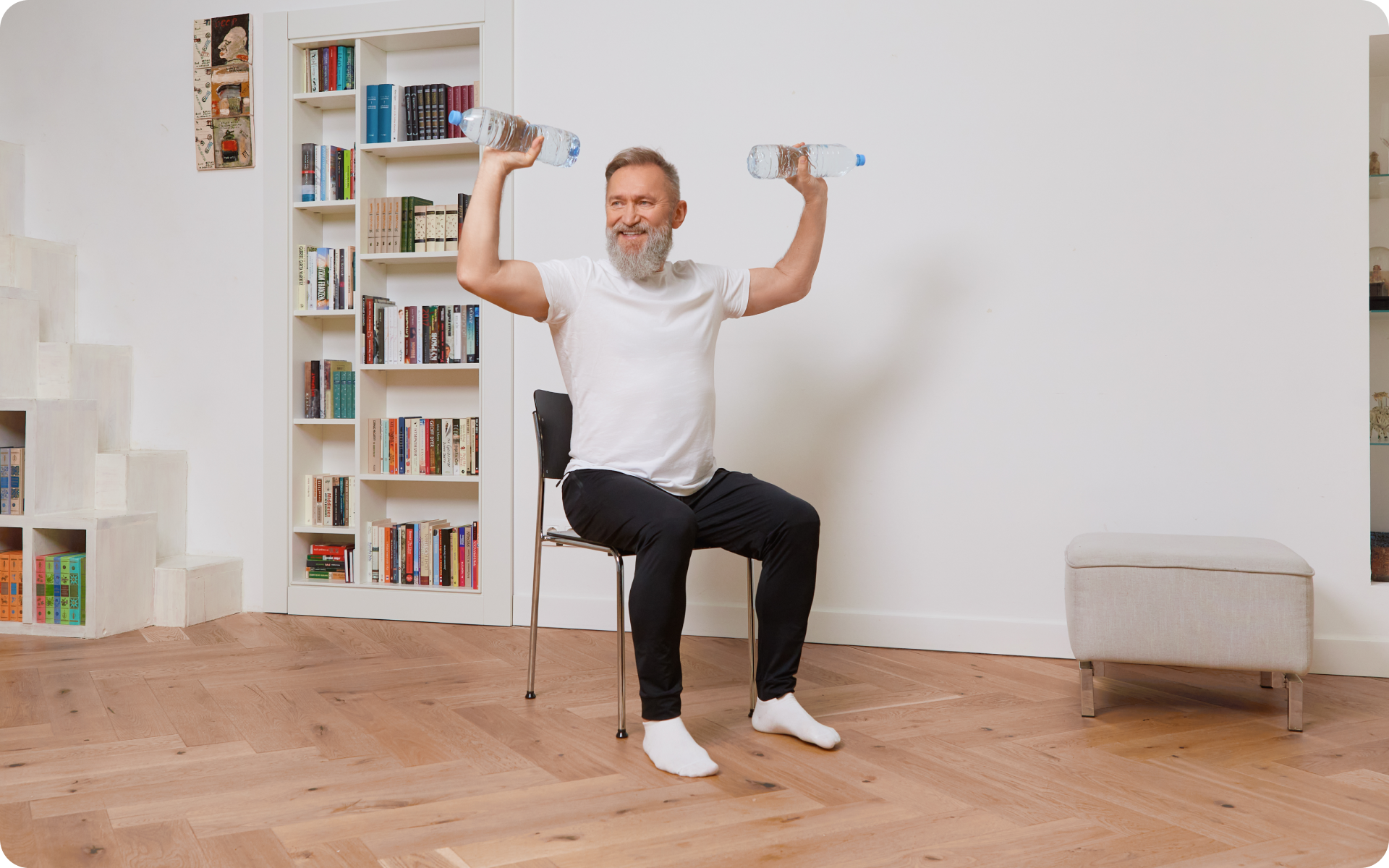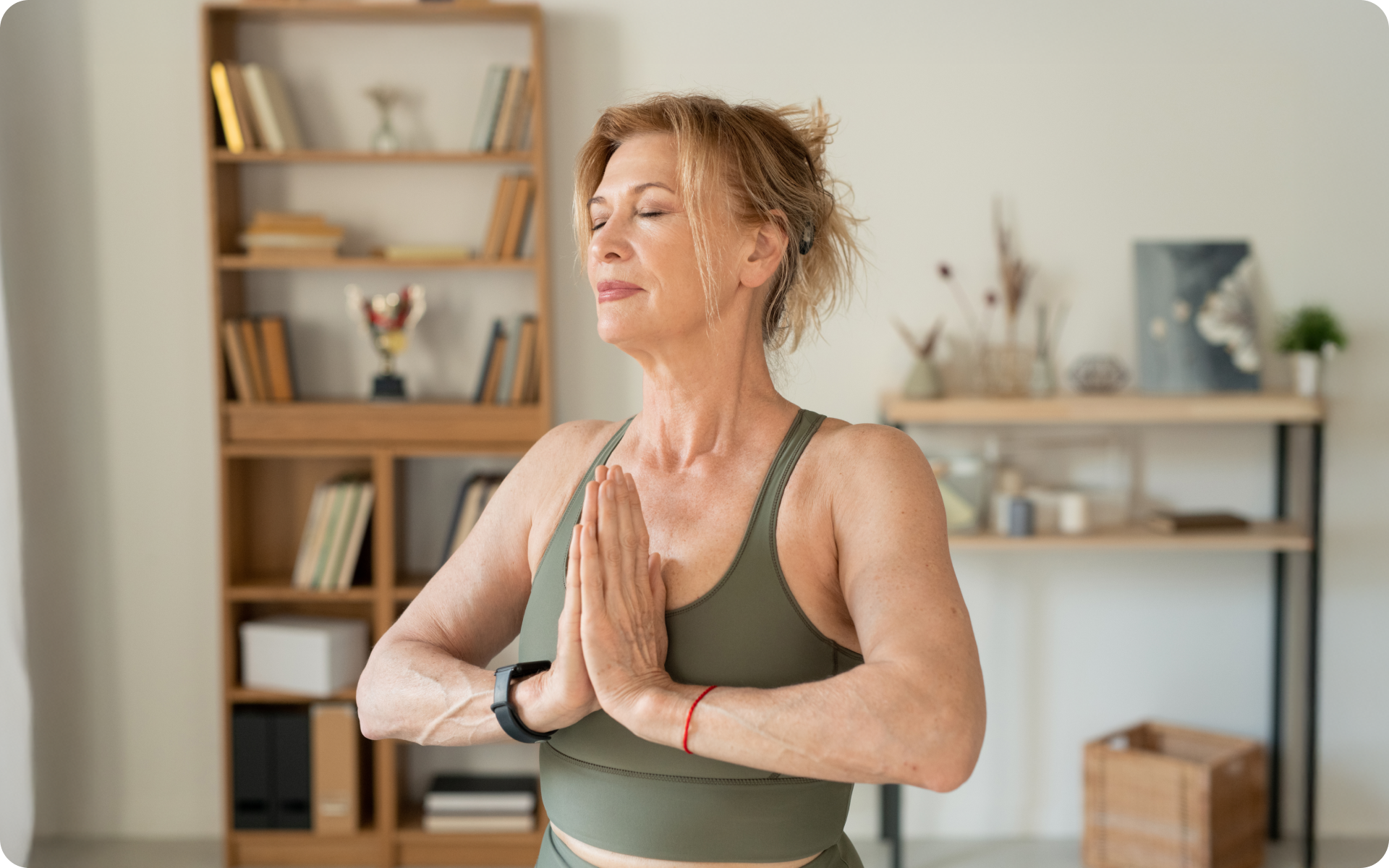Whenever you hear the word yoga, what comes to mind? Probably photos of fitness gurus pulling off poses requiring extreme flexibility, strength, balance and dexterity. You look at them in awe and think, “I can’t possibly do that, right?” Wrong! Yoga is not an athletic endeavor requiring great skill and finesse. It’s more than just practicing for a pose. This guide shows you how your journey in yoga can begin with simple but effective chair yoga.
What Is Chair Yoga?
Chair yoga is a gentler form of yoga that is suitable for people of all fitness levels. It was developed in 1982 by a yoga instructor, Lakshmi Voelker-Binder, to provide accessible options for students with arthritis (8).
Using a chair for support helps with balance while minimizing the pressure on your lower joints like your knees and hips. However, this does not make it any less challenging or less beneficial than other forms of yoga.
Yoga should be about understanding what’s right for you. That being said, all yoga poses should be adaptable to whoever is performing it, not the other way around.
Whether done on a mat or in a chair, yoga as a practice focuses on the same principles: staying in the moment, focusing on your breath, and paying attention to your thoughts.
Who Should Try Chair Yoga?
Now that you know what chair yoga is, you may find yourself asking whether it’s really meant for you. Let’s find out.
First off, we should probably point out that chair yoga can be enjoyed by anyone. However, the modified pose may be more ideal for certain population groups, including:
- People above 65 years. Chair yoga is a safe, low-impact pose that promotes healthy aging, making it suitable for older adults.
- People with limited mobility. Seated yoga can help people with mobility issues like those suffering from multiple sclerosis, access health benefits of traditional yoga (9).
- People with sedentary lifestyles. If you spend most of your time sitting at a desk at work, then practicing chair yoga can help improve your physical and psychological stress (6).
- People with chronic health conditions. Increasing research indicates that seated yoga can help people manage chronic diseases and related pain such as diabetes, arthritis, and dementia (7).
Read More: Should You Do Chair Yoga Every Day?
Why Should You Try Chair Yoga?
Modified chair yoga poses essentially work the same muscles as traditional yoga poses. This means it yields similar health benefits.
Practicing chair yoga can:
Increase Your Balance And Flexibility
Maintaining good flexibility and balance is vital for your health and overall well-being. It can reduce your risk of fall injuries as you age and help you stay independent.
In this 2010 study, older adults practicing chair yoga twice a week showed that they had better lower-body flexibility and static balance (5).
Boost Your Mental Well-Being And Mood
Research has shown that practicing yoga can result in less anxiety and better moods.
In one small-scale study, older adults that took chair yoga classes once a week reported improvements like better mood, less stress, and fewer panic attacks after 3 months (1).
Help In Managing Chronic Conditions
Some studies suggest that seated yoga can help people manage chronic health conditions like type 2 diabetes.
In this small pilot study, people with diabetes who enrolled in a 10-minute chair yoga program showed improved heart rate, blood sugar and pressure after 3 months (7).
Improve Muscle Strength And Tone
Traditional yoga poses have been shown to have the ability to improve strength in people of all ages.
A 2021 review found that chair yoga may be instrumental for older adults in developing and maintaining muscle strength (12). This is important especially since muscle mass tends to decline with age, which may lead to loss of function in older adults (10).
How Often Should I Practice Chair Yoga?
It is important to note that there are no official guidelines on how often you should be practicing chair yoga.
That being said, the CDC recommends that adults aged 65 or older should get 2 days of strengthening exercises and 3 days of balance activities weekly (11). Practicing chair yoga twice or three times a week may be a good place to start.
Are There Any Risks Of Overdoing Chair Yoga?
Like every other exercise, there’s a physical aspect of yoga. As such, it can be overdone, putting you at risk of getting injured like any other physical activity.
According to a survey published in the Internal Journal of Yoga Therapy, using excess effort is one of the most common causes of injury during yoga (13). The instructors reported that the most common injuries included wrist, shoulder, lower back, neck, and knee injuries.
Doing too much of one type of yoga can also worsen existing injuries or cause a new one. You should try to mix it up every now and then.
Reasons to use BetterMe are versatile: it provides effective yoga exercises, sheds a light on the benefits and downsides, and keeps you motivated. Check out the app on the App Store or Google Play and transform your life now.
How To Do Chair Yoga
Chair yoga is about adaptability. The type of chair you choose to use is not important. There are no “specialized yoga chairs” that will make the process more efficient.
Next, it’s important to note that chairs with wheels are not advisable since they are unstable. If you’re relatively short, put some blocks or folded yoga mats under your feet for a firm foundation.
Here are some of the best 7 chair yoga poses you can try out at home:
1. Chair Pigeon
This pose can help in managing pain and mobility issues connected with hip arthritis (3).
Here’s how you do it:
- Start by sitting upright, then bring your right leg over your left leg. Ensure that your right ankle rests on your left thigh.
- Now hold this position to feel the stretch.
- Repeat on the other side.
2. Chair Forward Fold
This pose helps in stretching your lower back and legs. You can choose to start with the standard method or try the seated forward fold variations.
Here’s how you do it:
- Start by sitting upright with your knees bent at 90-degree angles and your arms placed straight down at your sides.
- Slowly lean forward while exhaling then move your core towards your lap and your hands towards the floor.
- Next, rest your hands on the floor (or near it if you can’t reach the floor), and feel the stretch.
- Inhale then slowly rise back to your starting position.
3. Chair Twist
The chair twist pose is a great way to lengthen your spine and improve your flexibility. It may also aid in managing lower and upper back pain.
Here’s how you do it (4):
- Start by sitting upright, ensuring your knees are bent at 90-degree angles, and hands resting on your lap.
- Now turn your upper body to the right while holding the back of your chair for support.
- Hold this position to feel the twist then repeat on the other side.
Read More: Chair Yoga For Beginners: Easy & Effective At-Home Workouts
4. Chair Downward Dog
Are you having trouble with the standard version of the downward dog pose? Chair downward dog is a great alternative.
It provides similar strengthening and stretching benefits for your shoulder, legs, and lower back. There’s only one catch. Instead of sitting during this pose, you stand and use the chair for support.
Here’s how you do it:
- Start by standing upright, placing your arms at your sides and facing the seat of your chair.
- Slowly bend forward before placing your hands on your chair’s seat.
- Now hold the pose then return to your starting position.
5. Chair Cat-Cow
This pose is gentle and easy to do, and goes a long way in improving your spine’s flexibility. Additionally, it may also reduce neck, back, and shoulder pain (2).
Here’s how you do it:
- Start by sitting upright ensuring your knees are bent at 90-degree angles and hands placed on your knees.
- Next, inhale and open your chest, moving back your shoulders, and arching your back.
- Exhale and bring your chin toward your chest, ensuring you round your back and shoulders.
6. Chair Eagle Arms
This move is useful in strengthening your arms, opening up your shoulder joints, and increasing circulation.
Here’s how you do it:
- Sit on your chair and inhale while stretching out your arms by your sides.
- Now exhale before bringing your arms in front of you, then swing your right arm under the left.
- Next, grab your shoulders with opposite hands, basically giving yourself a hug.
- Lift your elbow a little higher while inhaling, then exhale, rolling your shoulders down and back. Take a few breaths.
- Repeat on the other side.
7. Chair Extended Side Angle
This pose strengthens your lung, chest, and shoulder muscles while stimulating your abs.
Here’s how you do it:
- Start by folding into a forward chair bend (Uttanasana) position.
- Now place your left fingertips on the floor or a yoga block positioned on the outside of your left foot.
- Next, open your chest and twist to the right while inhaling. Extend your right arm toward the ceiling and look up to it.
- Hold for several breaths and repeat on the other side.
You can find more depths about everyday yoga on the BetterMe app. Release yourself from stress and make big life changes by just clicking the “download” button.
Tips For A Healthy And Safe Yoga Practice
The key to any healthy and safe yoga practice is balance. To avoid overdoing it and increasing risk of injury, here’s what experts recommend:
Start With A Mini Practice
Try starting off with short sessions of about 15 to 20 minutes. It doesn’t matter whether you do this daily with about 2 days off a week, the risk of injury from overusing these postures will be significantly lowered.
Listen To Your Body
Our bodies are excellent at sending signals when something is not right. Make sure you’re paying attention to them.
If it feels like you’re really straining, then you are. Stop and rest. Same thing applies if your muscles are shaking dramatically, or you can maintain good alignment. Remember, you can always get into the pose again after resting and recovering.
Explore The Less Physically Intense Variation Of The Pose
While chair yoga is generally simple and easy to pull off, you can try the less challenging variations if you’re still having problems. Everyone is different and it’s ultimately about how comfortable and adaptable you are to a pose.
Always inquire with your instructor if you’re not sure what a pose entails.
Rest Days Are Just As Important
If the aim of your practice is centered around building strength and improving flexibility, then you should consider taking rest days between classes. This will give your muscles time to repair and actually build more strength.
Explore The Philosophies Of Yoga
Understanding some of the underlying philosophies of yoga like nonviolence could be just as enlightening. Remember, there’s more to yoga than just the physical aspect.
Exploring the more abstract philosophies of yoga can help you be restrained, and be more generous and gentle with yourself. This prevents overdoing the workout which reduces your risk of injury.
Consider Private Or Small Group Sessions With A Yoga Therapist
Yoga therapists can aid in giving you adjustments, guiding you into starting practice, and how to safely increase the intensity. You may even be able to get a yoga therapy session billed through your physical therapist provided there’s a proper prescription for rehabilitation from your doctor.
Getting The Most Out Of Chair Yoga With The BetterMe App
One of the best things about Chair Yoga is that it can be done by anyone, no matter what their fitness level or age. Whether you are a beginner or an experienced yogi, Chair Yoga can offer a variety of benefits.
The BetterMe app is here to help you with that! It offers a variety of yoga poses that can be done while sitting in a chair, as well as those that need you to support yourself with your hands on the chair. There are also a number of breathing exercises that can help to relax and focus your mind.
If you can’t afford a gym membership or personal trainer, the BetterMe app is a great alternative! It offers all of the same benefits, without the cost.
The Bottom Line
Chair yoga is essentially a modified version of traditional yoga. It offers similar physical and mental health benefits with the added advantage of being more accessible and low impact.
While this mostly seated variant of yoga is great for anyone, it’s especially suitable for older adults, people with mobility issues, and those with sedentary lifestyles.
DISCLAIMER:
This article is intended for general informational purposes only and does not serve to address individual circumstances. It is not a substitute for professional advice or help and should not be relied on for making any kind of decision-making. Any action taken as a direct or indirect result of the information in this article is entirely at your own risk and is your sole responsibility.
BetterMe, its content staff, and its medical advisors accept no responsibility for inaccuracies, errors, misstatements, inconsistencies, or omissions and specifically disclaim any liability, loss or risk, personal, professional or otherwise, which may be incurred as a consequence, directly or indirectly, of the use and/or application of any content.
You should always seek the advice of your physician or other qualified health provider with any questions you may have regarding a medical condition or your specific situation. Never disregard professional medical advice or delay seeking it because of BetterMe content. If you suspect or think you may have a medical emergency, call your doctor.
SOURCES:
- Adapted yoga to improve physical function and health-related quality of life in physically-inactive older adults: a randomised controlled pilot trial (2017, biomedcentral.com)
- Chair Cat Cow Pose (n.d., tummee.com)
- Chair Pigeon Pose (n.d., tummee.com)
- Chair Seated Twists (n.d., tummee.com)
- Effect of a 12-Week Yoga Intervention on Fear of Falling and Balance in Older Adults: A Pilot Study (2010, archives-pmr.org)
- Fifteen Minutes of Chair-Based Yoga Postures or Guided Meditation Performed in the Office Can Elicit a Relaxation Response (2012, nih.gov)
- Impact of a 10 minute Seated Yoga Practice in the Management of Diabetes (2016, nih.gov)
- Lakshmi Voelker (n.d., yogainternational.com)
- Mindfulness in Motion for People with Multiple Sclerosis: A Feasibility Study (2017, meridian.allenpress.com)
- Muscle tissue changes with aging (2010, nih.gov)
- Physical Activity is Essential to Healthy Aging (2022, cdc.gov)
- The Effect of Chair-Based Exercise on Physical Function in Older Adults: A Systematic Review and Meta-Analysis (2021, mdpi.com)
- Understanding and Preventing Yoga Injuries (2009, meridian.allenpress.com)
